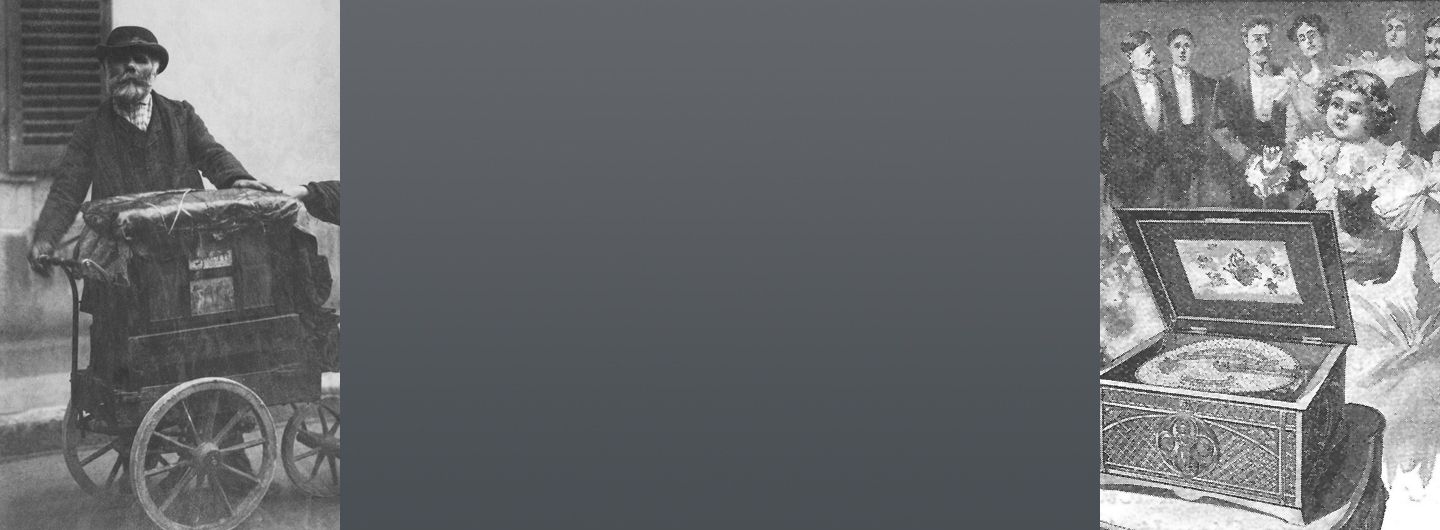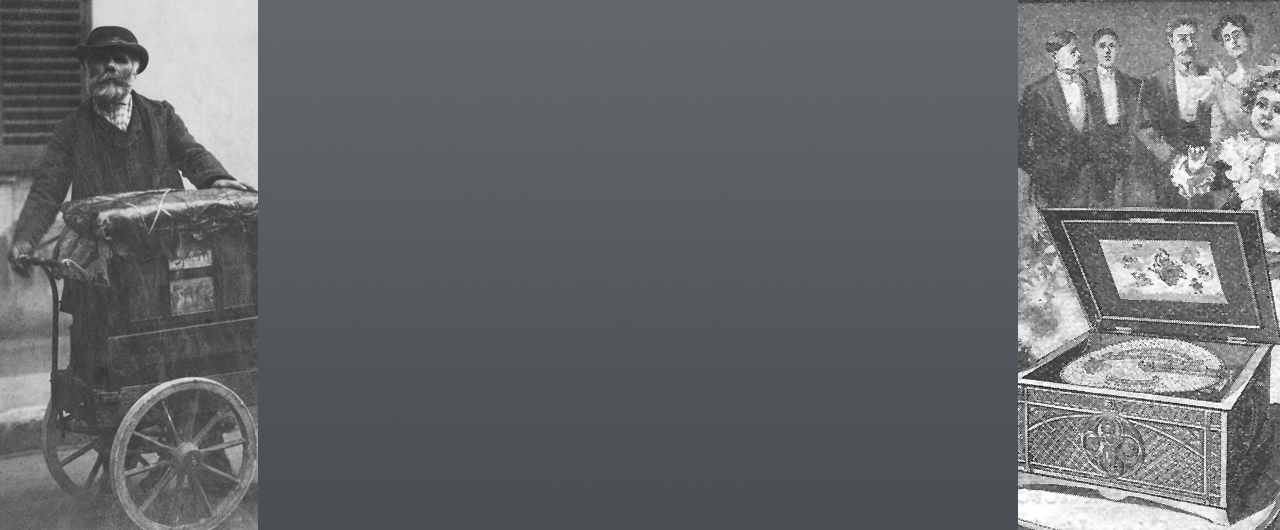





Pinned media have been used to store music for centuries. A pin on a spinning cylinder or disc can send air to a pipe in an organ, pluck a tine in a music box or actuate a chime in a clock.
An automatic organ was first described in the 9th century by the Banũ Mũsã brothers of Baghdad. Their pinned cylinder or barrel could be removed and replaced with another, making this possibly the earliest example of removable media. Barrel organs reemerged in Europe in the 14th and 15th centuries amid a flowering of automation that included clocks, carillons and automata. Organs with removable cylinders were in evidence in Europe by the 17th century.
Pinned media have also been used to automate carillons, organs, pianos and music boxes. For a time, street organs accounted for much of the music heard by everyday people. In the late 19th century, music boxes with removable discs occupied a place in parlors that gramophones and records would take in the early 20th.


After the Banũ Mũsã's 9th century invention it wasn't until the 16th century that barrel organs and musical clocks using pinned cylinders appeared in Europe. Early cylinders could be quite large—up to six feet in diameter and ten tons in weight— and were built permanently into the playing mechanism. Tunes could be changed by "re-pinning" the barrel by pushing pegs into predrilled holes. It isn't clear when it first occurred to someone to make the entire barrel removable, as was the case in the Banũ Mũsã's instrument, but barrel organs with removable cylinders were in evidence in Europe by the 17th century.
In addition to organs, pinned cylinders have since been used for automated pianos and music boxes. The instrument the organ grinder played on the street, with his proverbial dancing monkey, used a pinned cylinder in most cases. The music boxes most people are familiar with today contain a small, fixed cylinder that plays only one tune, but in the Victorian era, large and expensive music boxes came with a drawer holding additional cylinders.
Many of the examples below demonstrate the connection between mechanical music and clock or watch making. Organettes and music boxes are usually driven by clockwork and their mechanisms require similar skills from machinists and engineers. Musical clocks, which play tunes repeatedly on a regular schedule, were instrumental in the early development of the barrel organ. What is considered the first music box was a musical watch created in 1796 that contained a tiny cylinder.


Cylinders were bulky and inconvenient to store. The pins were delicate and easily damaged during handling. They were hard to manufacture which made them expensive. Music boxes that played discs first appeared in 1886. Discs were relatively easy to load and unload from the machine and easier to store than cylinders. Tunes could be stamped into a disc by machine, enabling mass production. Disc music boxes became common in middle class households, up until the phonograph and gramophone took their place. A few years later, similar difficulties with cylinder phonograph records also motivated a transition to discs.


Pins can also be fixed in a flat strip, which is then moved mechanically across the actuators.


A musical clock created by Flemish clockmaker Nichola Vallin in 1598 used a barrel with holes into which pins could be placed to program different tunes. The Gloggomobil is a modern example of this idea, with a removable barrel so that multiple barrels could, at least theoretically, be programmed with different tunes. The Musicano does something similar, but on a flat geometry rather than a cylinder. This allows pins to be laid out on a musical staff, providing a familiar visual guide to programming a tune.
The Kariola is in a class by itself.